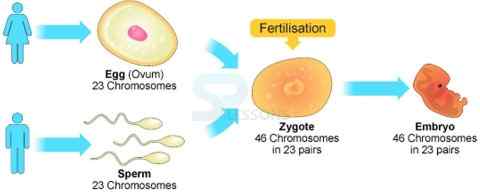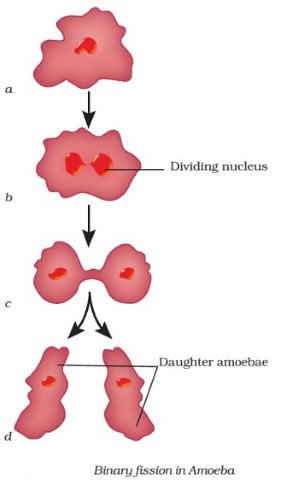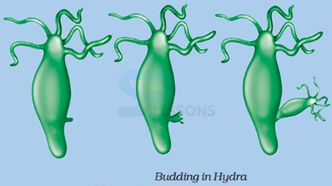 Introduction
Introduction
Q. What is Reproduction In Animals?
Ans: There are two modes by which animals reproduce. These are Sexual reproduction and Asexual reproduction. There are many organisms which do not reproduce (mules, sterile worker bees, infertile human couples, etc).
 Reproduction
Reproduction
- The reproductive parts in animals produce gametes that fuse to form a zygote. It is the zygote which develops into a new individual. This type of reproduction beginning from the fusion of male and female gametes is called sexual reproduction.
- The male reproductive organs include a pair of testes (singular, testis), two sperm ducts and a penis. The testes produce the male gametes called sperms.
- The female reproductive organs are a pair of ovaries, oviducts (fallopian tubes) and the uterus. Ovary produces female gametes called ova (eggs).
- In human beings, a single matured egg is released into the oviduct by one of the ovaries every month. Uterus is the part where development of the baby takes place. Like the sperm, an egg is also a single cell.
- The first step in the process of reproduction is the fusion of a sperm and an ovum. When sperms come in contact with an egg, one of the sperms may fuse with the egg. Such fusion of the egg and the sperm is called fertilization.
Image: Various types of Simple tissues
Source: NCERT Text Books
- During fertilization, the nuclei of the sperm and the egg fuse to form a single nucleus. This results in the formation of a fertilized egg or zygote.
- Fertilization which takes place inside the female body is called internal fertilization. Internal fertilization occurs in many animals including humans, cows, dogs and hens.
- During spring or rainy season, frogs and toads move to ponds and slow flowing streams. When the male and female come together in water, the female lays hundreds of eggs.
- Unlike hen’s egg, frog’s egg is not covered by a shell and it is comparatively very delicate. A layer of jelly holds the eggs together and provides protection to the eggs.
- As the eggs are laid, the male deposits sperms over them. Each sperm swims randomly in water with the help of its long tail. The sperms come in contact with the eggs. This results in fertilization.
- This type of fertilization in which the fusion of a male and a female gamete takes place outside the body of the female is called external fertilization. It is very common in aquatic animals such as fish, starfish, etc.
Image: Binary fission in Amoeba
Source: NCERT Text Books
- In each hydra, there may be one or more bulges. These bulges are the developing new individuals and they are called buds. In hydra, the new individuals develop as outgrowths from a single parent.
- This type of reproduction in which only a single parent is involved is called asexual reproduction. Since new individuals develop from the buds in hydra, this type of asexual reproduction is called budding.
- Another method of asexual reproduction is observed in the microscopic organism, amoeba. Reproduction in which an animal reproduces by dividing into two individuals is called binary fission. Apart from budding and binary fission, there are other methods by which a single parent reproduces the young ones.






